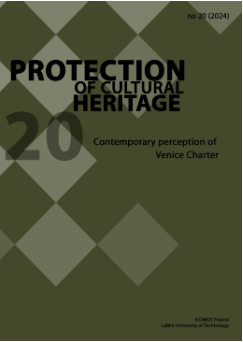World Heritage as a balancing act: experiences from a medium-sized World Heritage City in Bavaria
Patricia Alberth
City of Bamberg, Germany (Germany)
Abstract
The Town of Bamberg has been inscribed on the UNESCO World Heritage List in 1993 due to its medieval urban layout and its well preserved buildings mostly from the Middle Ages and the Baroque era. A large part of the historic streets and squares still exist. They make up an essential part of the city’s public space. Yet, the demands placed on this public space are currently undergoing some changes – especially under the influence of climate change and the Corona pandemic.In line with the UNESCO Recommendation on the Historic Urban Landscape, Bamberg’s urban fabric is based on the historical stratification of cultural and natural values and features. The urban fabric relates to the landscape in which it is embedded – river Regnitz and the surrounding hills – as well as to religious traditions, trade activities and building customs. The aim of this paper is to analyze recent developments in the planning and use of public spaces in Bamberg taking into account current methods of participation. In 2020, the City of Bamberg was awarded the contract by the Federal Ministry of the Interior, for Construction and Home Affairs, for a project period of seven years as part of the "Smart Cities Model Projects" funding programme to promote digitalization at all levels of urban development. Accordingly, the contribution of digital technologies to urban planning and of citizen participation will receive special attention.
Keywords:
Bamberg, Germany, HUL, World Heritage, public space, medium-sized city, smart cityReferences
Bandarin F., van Oers R., Reconnectiong the City: The Historic Urban Landscape Approach and the Future of Urban Heritage, Wiley-Blackwell, Chichester 2014.
Google Scholar
Bandarin R., van Oers R., The historic urban landscape: Managing heritage in an urban century, Wiley-Blackwell, Chichester 2012.
Google Scholar
Bast E. M., Baur A., Was Bamberg prägte: 52 große und kleine Begegnungen mit der Stadtgeschichte, Verlag Fränkischer Tag, Bamberg 2017.
Google Scholar
City of Bamberg, Bamberger Zahlen 2020 - Statistisches Jahrbuch der Stadt Bamberg, 2020.
Google Scholar
Gunzelmann T., Die Kunstdenkmäler von Bayern: Stadt Bamberg 1 – Stadtdenkmal und Denkmallandschaft, „1. Stadtentwicklungsgeschichte“, Bayerische Verlagsanstalt, Bamberg 2012.
Google Scholar
Knefelkamp U., Reddig W. F., Zink R., Vielfältiges Bamberg: Eine Stadtgeschichte, Verlag Fränkischer Tag, Bamberg 2008.
Google Scholar
Moser P., Bamberg: Geschichte einer Stadt, Babenberg Verlag, Bamberg 1998.
Google Scholar
UNESCO, Recommendation on the Historic Urban Landscape, 2011.
Google Scholar
Authors
Patricia AlberthCity of Bamberg, Germany Germany
Statistics
Abstract views: 52PDF downloads: 61
License

This work is licensed under a Creative Commons Attribution-ShareAlike 4.0 International License.








